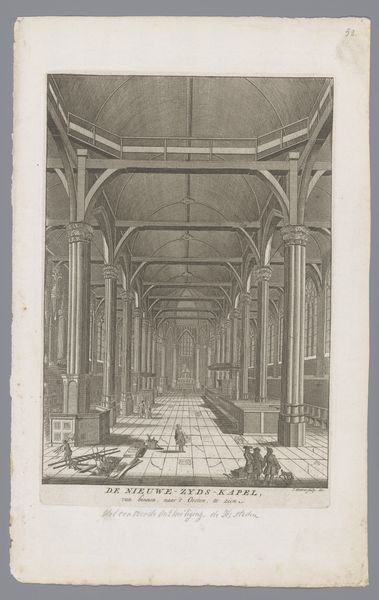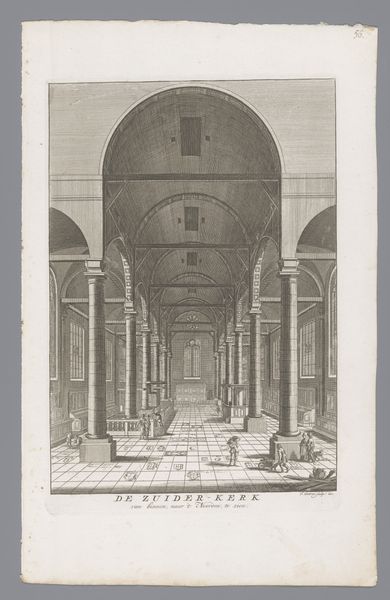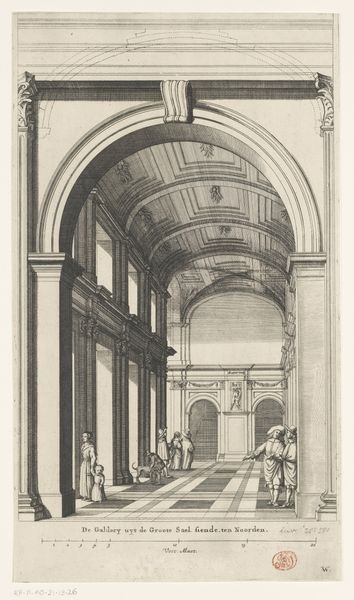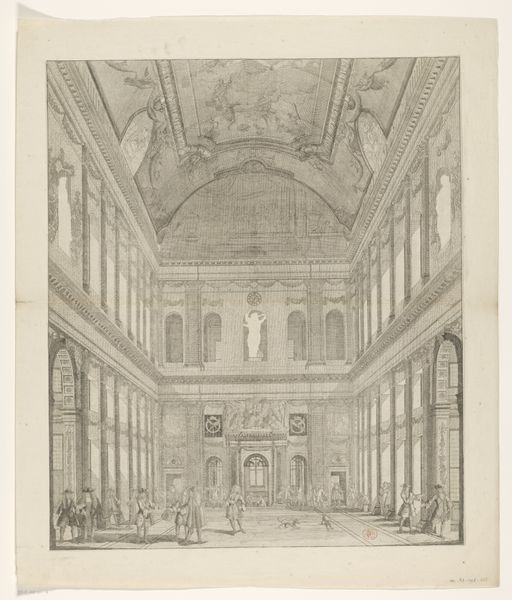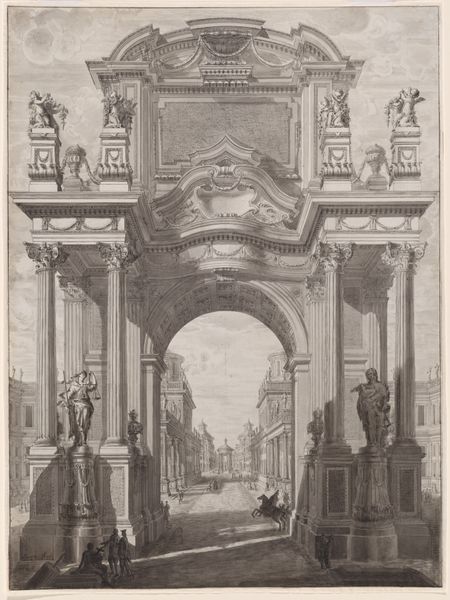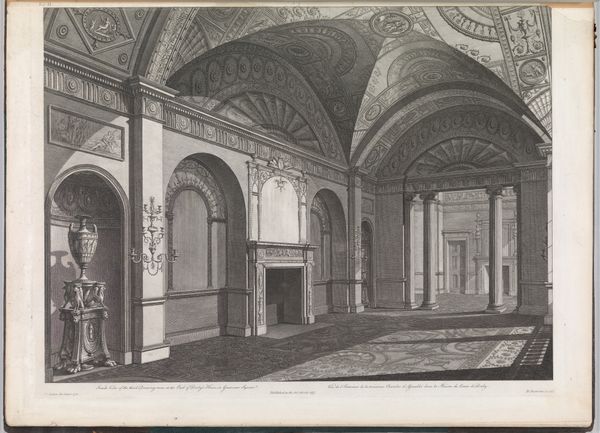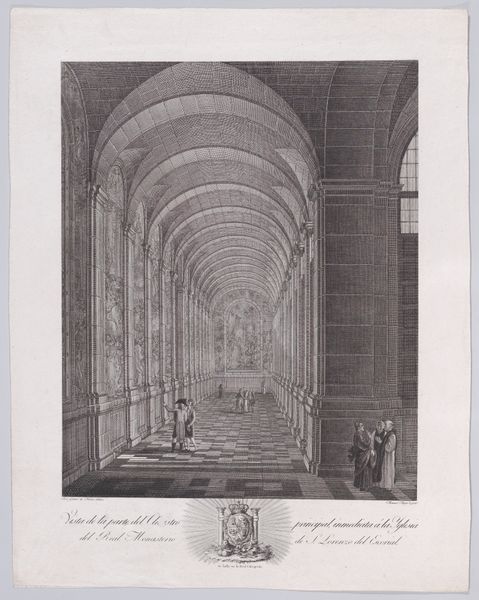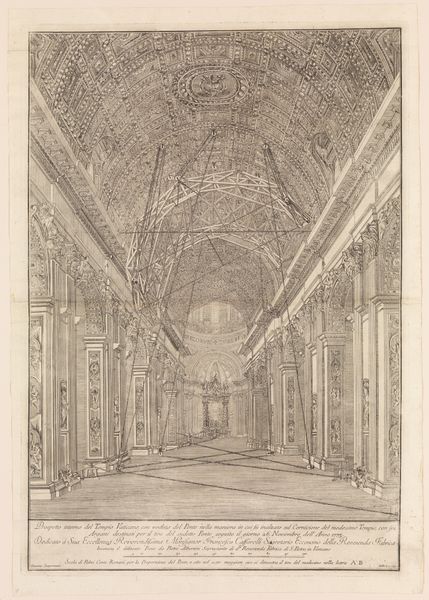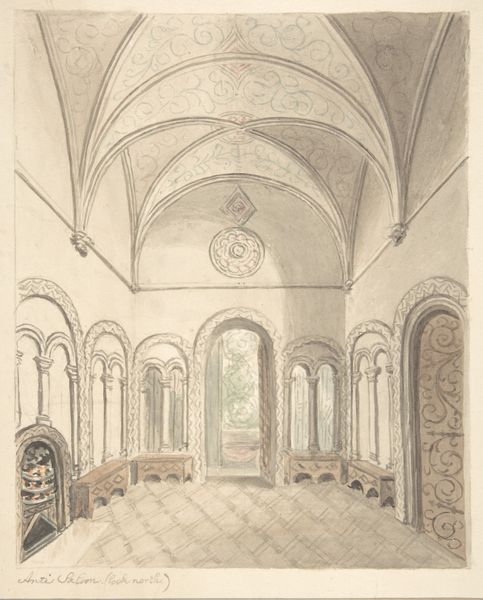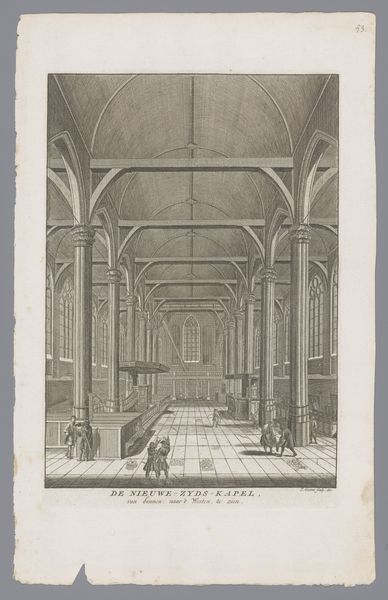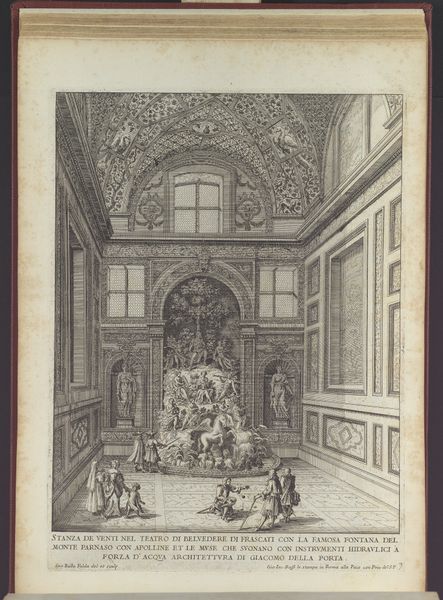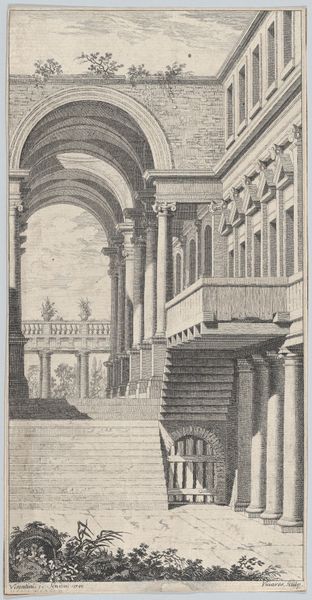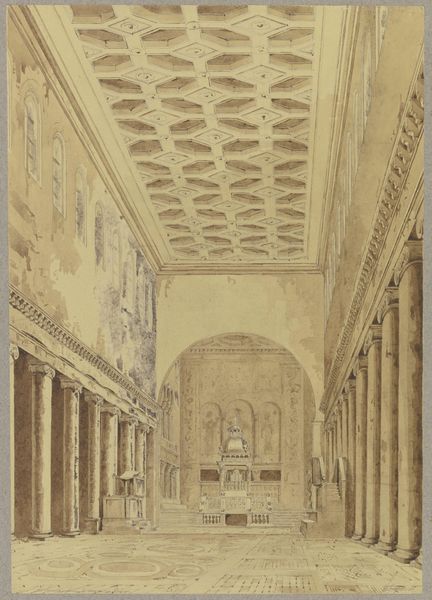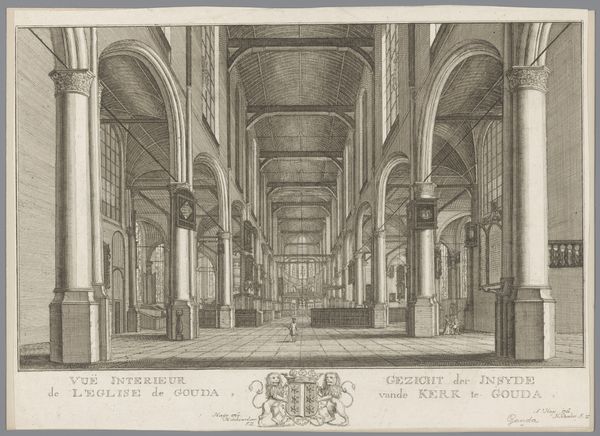
Catafalque for Cardinal Pietro Aldobrandini in Santa Maria sopra Minerva, Rome; from 'Libro De Catafalchi, Tabernacoli, con varij designi di Porte fenestre et altri ornamenti di Architettura' 1621
0:00
0:00
drawing, print, engraving, architecture
#
drawing
#
baroque
# print
#
italian-renaissance
#
engraving
#
architecture
Dimensions: Sheet: 16 3/16 × 10 15/16 in. (41.1 × 27.8 cm) Plate: 13 1/2 × 9 5/16 in. (34.3 × 23.6 cm)
Copyright: Public Domain
Curator: This engraving, dating to 1621, is by Domenico Parasacchi. It depicts the Catafalque for Cardinal Pietro Aldobrandini in Santa Maria sopra Minerva, Rome. It’s currently held at the Metropolitan Museum of Art. Editor: Immediately, I’m struck by the sheer linearity and depth of perspective. The repetition of vertical columns receding into the space is both calming and monumental. The values range from stark white to the dense stippling defining depth, resulting in overall graphic precision. Curator: Absolutely. The precise rendering of architectural space is crucial here. Consider the linear precision used to delineate every architectural detail. Each element—columns, arches, statues—is sharply articulated. Editor: Yes, it's like a stage set designed to impress. The catafalque itself is raised prominently at the end of the perspective lines, suggesting not just death but also the ascent of the Cardinal's spirit. There's an intense symbolic load in such theatrical presentation of death. Curator: Precisely. The catafalque in its time was a potent symbol of the family's continuing prestige. The symmetry and the strong horizontals—look at the base of the columns, how those echoes continue further into the drawing. It creates a sense of stately progression through this temporary monumentality. Editor: I note also the figures populating the scene. They’re not just fillers; their solemn assembly emphasizes ritual. They are a visual representation of the earthly church. Do you think the composition of the plate supports an allegory of spiritual attainment? Curator: It very well could. Remember the visual language in Italian Baroque. It combines naturalism with the era’s prevailing taste for magnificence, all employed to instruct and inspire. The image operates as both a memorial record and a means of social representation, reinforcing Aldobrandini's family legacy. Editor: And yet, stripped bare of the pageantry in graphic black and white, the drawing exposes an emptiness too—a void at the heart of this grand display. It’s an eloquent, sobering commentary on earthly power and mortal fate. Curator: Yes. Examining the architectural lines, observing the rhythmic repetition—ultimately lets us decode the period's mindset through Parasacchi’s vision. Editor: While contemplating the symbols and the visual narratives of this Baroque depiction, we become aware of both a celebration and a stark reminder of what endures beyond grandeur.
Comments
No comments
Be the first to comment and join the conversation on the ultimate creative platform.
